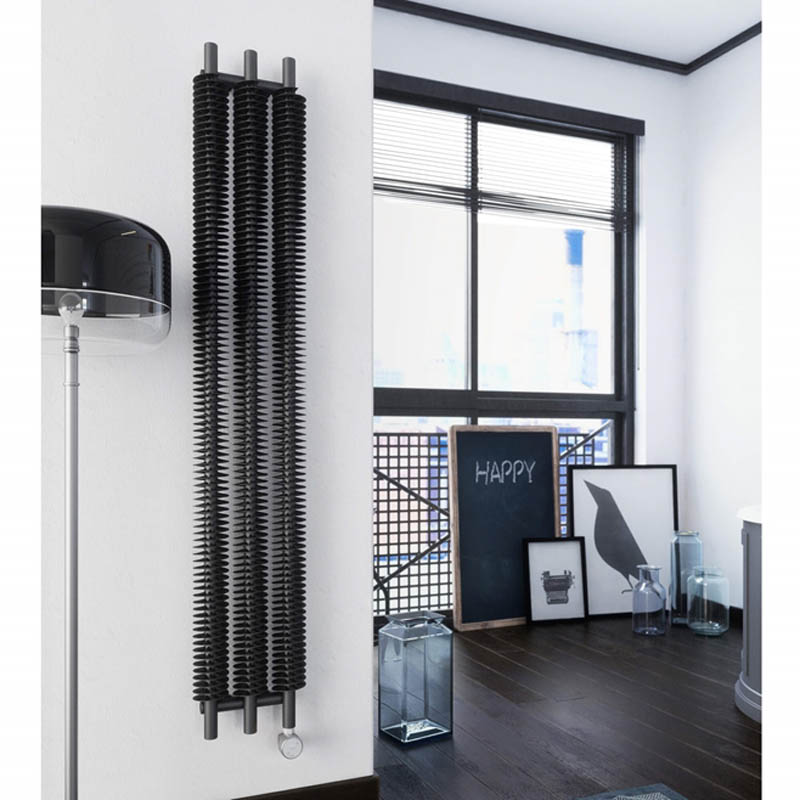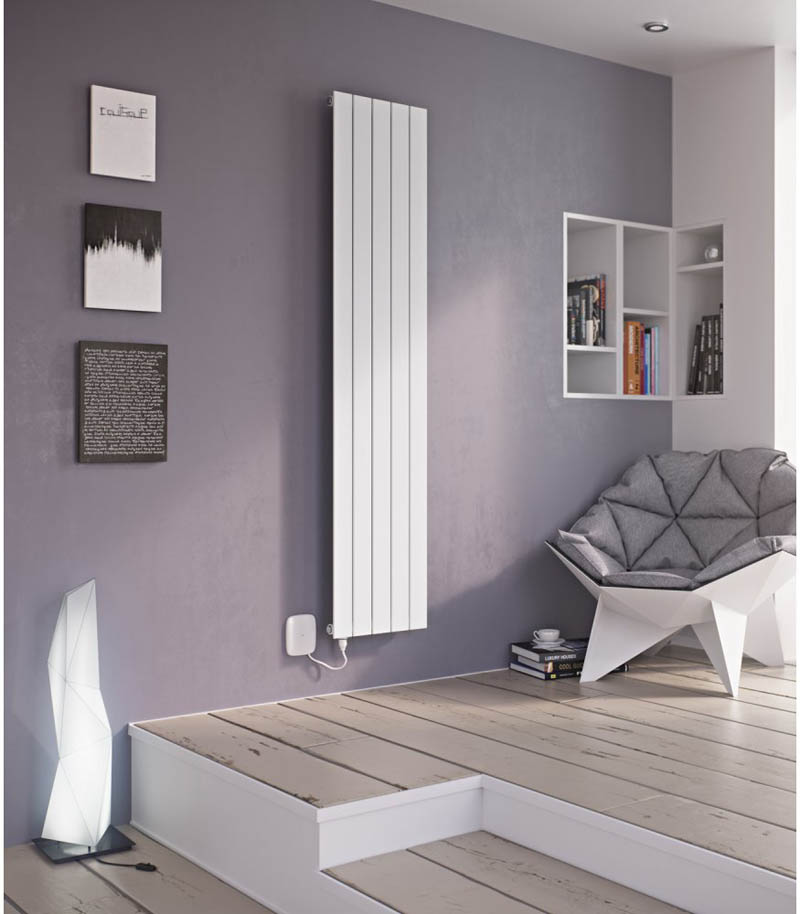Homeowners across the nation are noticing the value of electric vertical radiators for warming their spaces. With rising prices for natural gas and living costs going up in general, switching to electric radiators is a great way to save – especially if you already have or are thinking of investing in a solar energy system.
In today’s blog, we’ll discuss electric vertical radiators, their benefits, and why they are a great heating system to consider for a range of spaces.
What Is A Vertical Electric Radiator?
A vertical electric radiator is similar to a typical plumbed radiator, with the only difference being that it uses electricity to radiate heat – rather than using hot water to radiate heat.
In terms of dimensions, vertical radiators will often be much taller than they are wide. This allows them to be used in places with high ceilings or spaces with limited horizontal wall space.
How Do Vertical Electrical-Powered Radiators Work?
Electrical radiators – both vertical and horizontal – operate by using electricity to generate heat. In traditional plumbed radiators, water is warmed up in a boiler and then transported to a wall-mounted radiator through a central heating system. This water will heat up the metal chassis of the radiator unit, which in turn heats up the air around it.
In contrast, an electric radiator will draw electricity directly from your home’s circuit as its source of power to generate heat. Electric radiators are filled with oil or a thermodynamic fluid called glycol. The electricity passed through the radiator creates a reaction with this fluid or oil that releases heat.
Due to the fact electric radiators don’t need to be plumbed into a central heating system, they have more versatility with where they can go. As long as there’s a plug socket or internal electrical wiring close to where it’s situated, it is able to draw energy and generate heat.
Where Can I Use Electric Vertical Radiators?
Vertical electric radiators are a great option for spaces that have high ceilings or for spaces that have more vertical wall space than horizontal wall space.
Rooms in the home, such as kitchens, are a great example, as most wall spaces will be taken up by appliances or counters. Stairwells are another ideal place for vertical radiators; to ensure the whole space is warmed efficiently.
Bathrooms also often benefit from vertical radiators, such as heated towel racks or towel rails – as bathrooms tend to have little horizontal wall space available for longer radiators or towel racks.
Due to only needing electricity, some electric radiators will be free-standing – allowing them to be moved from room to room as your heating needs change.

What Are the Benefits Of Electric Vertical-Styled Radiators?
Electrically powered vertical radiators have a variety of benefits over plumbed and horizontal radiators, such as:
● They are more economically and environmentally friendly than traditional plumbed radiators. Generally, electrical radiators use less power than traditional plumbed radiators to heat, meaning investing in them can reduce your carbon footprint.
● They can save you money. As they use less power overall to heat, you won’t need to pay as much in utility bills. If you have an electric stove, it means you can cut gas out of your household completely.
● Combined with solar power systems, electrically powered radiators can help your home run entirely self-sufficiently without the need for central heating. This is also another great way to save money.
● Helps you make use of ‘dead space’ for rooms with tall ceilings.
● Provides you with a stylish talking point to complement your home’s interior design.
Just to name a few of the obvious benefits these types of radiators can provide to your home and lifestyle.
How Powerful Are Electric Vertical Radiators?
Electrically powered vertical radiators will vary in power depending on the brand, size, and purpose of the radiator.
For radiators that are wall-mounted and hooked directly into your home’s circuit, you can expect a wattage output of 1000W – 2000W. DQ Vela offers an excellent range of wall-mounted radiators to consider.
For free-standing radiators, you can expect a wattage range of 900W – 1500W. Paladin provides a comprehensive selection to choose from.
How Much Do Electric Vertical Radiators Cost?
Electrical vertical radiators aren’t much more expensive than their horizontal counterparts. The price point will depend largely on the brand, size, material and style of radiator you choose. For instance, a designer radiator will cost more than your average electric vertical radiator.
Equally, bigger radiators cost more to manufacture and will ultimately cost more when they reach the shelves.
You can expect to spend anywhere from £400 – £1000 for a high-quality radiator from a reputable brand.
In Summary
Electric vertical radiators are an excellent choice for those wanting to buy into the future of heating homes. An investment in an electric vertical radiator is an investment for the future!


